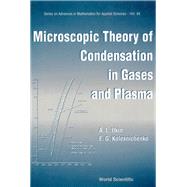
What is included with this book?
|
1 | (20) | |||
|
2 | (6) | |||
|
2 | (2) | |||
|
4 | (1) | |||
|
5 | (3) | |||
|
8 | (7) | |||
|
8 | (1) | |||
|
9 | (1) | |||
|
10 | (2) | |||
|
12 | (3) | |||
|
15 | (2) | |||
|
17 | (4) | |||
|
21 | (54) | |||
|
22 | (3) | |||
|
25 | (13) | |||
|
25 | (5) | |||
|
30 | (4) | |||
|
34 | (4) | |||
|
38 | (17) | |||
|
40 | (7) | |||
|
47 | (2) | |||
|
49 | (6) | |||
|
55 | (14) | |||
|
56 | (3) | |||
|
59 | (2) | |||
|
61 | (1) | |||
|
62 | (1) | |||
|
63 | (4) | |||
|
67 | (2) | |||
|
69 | (6) | |||
|
69 | (1) | |||
|
70 | (5) | |||
|
75 | (72) | |||
|
75 | (7) | |||
|
76 | (3) | |||
|
79 | (3) | |||
|
82 | (65) | |||
|
85 | (14) | |||
|
99 | (10) | |||
|
109 | (8) | |||
|
117 | (21) | |||
|
138 | (9) | |||
|
147 | (28) | |||
|
148 | (4) | |||
|
152 | (2) | |||
|
154 | (5) | |||
|
154 | (3) | |||
|
157 | (2) | |||
|
159 | (5) | |||
|
164 | (4) | |||
|
168 | (7) | |||
|
175 | (44) | |||
|
176 | (1) | |||
|
177 | (3) | |||
|
180 | (7) | |||
|
181 | (2) | |||
|
183 | (4) | |||
|
187 | (14) | |||
|
187 | (8) | |||
|
195 | (6) | |||
|
201 | (18) | |||
|
201 | (10) | |||
|
211 | (8) | |||
| Conclusions | 219 | (6) | |||
| Appendices | 225 | (38) | |||
| A. Dimensionless form of the system Eq. (2.2) | 225 | (3) | |||
| B. Low-pressure limit (j equal to 2,...,r - 1) | 228 | (6) | |||
| B.1. Region 3 (k less than or equal to p(j)) | 230 | (1) | |||
| B.2. Region 2 (k equal to p(j) + 1,...,q(j)) | 230 | (1) | |||
| B.3. Region 1 (k equal to q(j) + 1,...,M(j)) | 231 | (2) | |||
| B.4. Intermediate case j equal to r | 233 | (1) | |||
| C. Quasisteady equations for concentrations | 234 | (6) | |||
| C.1. High-pressure limit (j Greater than r) | 234 | (1) | |||
| C.2. Intermediate case (j equal to r) | 234 | (2) | |||
| C.3. Low-pressure limit (j less than r) | 236 | (2) | |||
| C.4. Equations for monomers (j equal to 1) | 238 | (2) | |||
| D. FORTRAN subroutines for computing parameters of the theory | 240 | (23) | |||
| D.1. Initial data | 240 | (4) | |||
| D.2. Parameter r | 244 | (5) | |||
| D.3. Function j* | 249 | (2) | |||
| D.4. Function K(j) | 251 | (1) | |||
| D.5. Function n(je) | 252 | (4) | |||
| D.6. Quasisteady concentrations n(j) | 256 | (7) | |||
| References | 263 | (8) | |||
| Index | 271 |
The New copy of this book will include any supplemental materials advertised. Please check the title of the book to determine if it should include any access cards, study guides, lab manuals, CDs, etc.
The Used, Rental and eBook copies of this book are not guaranteed to include any supplemental materials. Typically, only the book itself is included. This is true even if the title states it includes any access cards, study guides, lab manuals, CDs, etc.